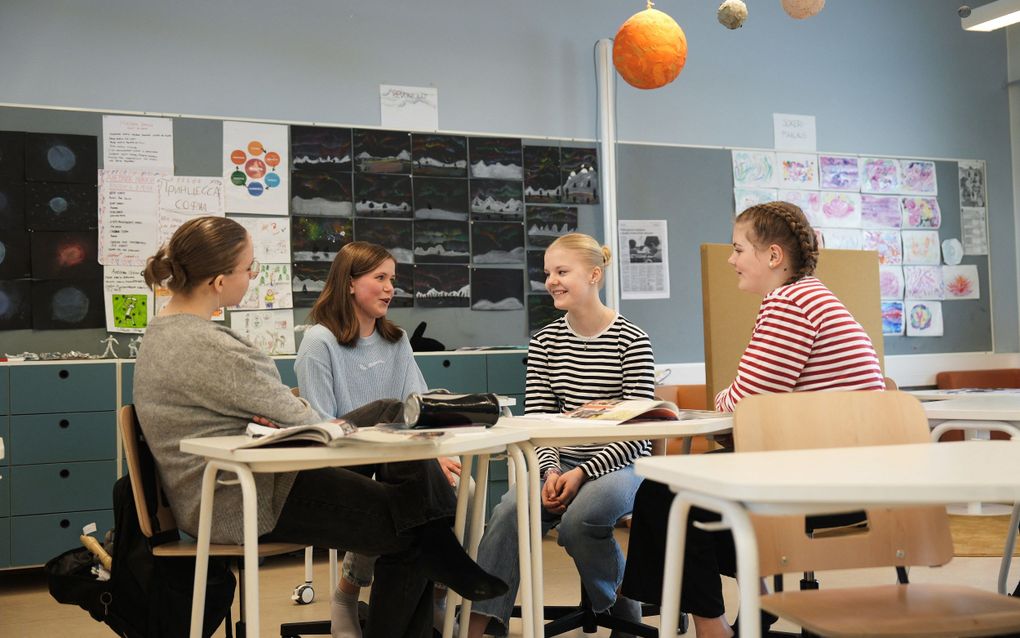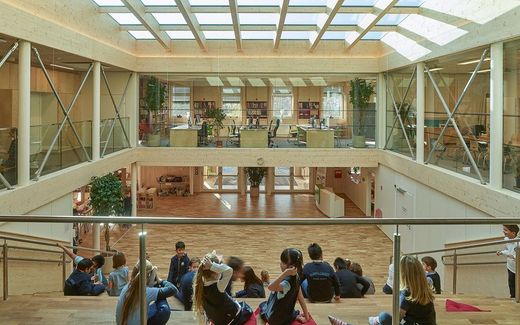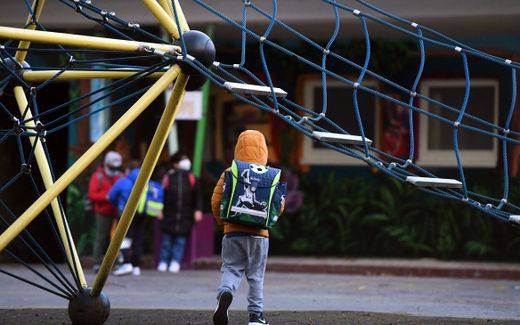Why Finland owes its education system to the Bible

Eira Naeppäri, Venla Rinnepelto, Aava Nikkanen and Lisa Nikkanen from 8th grade at the itae-suomen school in Lappeenranta. Photo AFP, Alessandro Rampazzo
Northern Europe
Finnish education is world-famous. Finland was at the top of the global PISA ranking several times. Why is the Finnish school so excellent? Few people know that this is because of the work of five Christian men.
Some nations have tried to copy Finland’s success. Partly, that is possible. But they do well to take those people in account.
Martin Luther

Martin Luther is best known for having launched the Reformation through Ninety-Five Theses at the castle church in Wittenberg, in 1517. Yet, his letter “To the Christian Nobility of the German Nation”, written three years later, was probably the second most important event of the Reformation.
Since the Bible was the ultimate authority, Luther believed that everyone ought to be able to read it. Education was key for this. Luther called the nobles of Germany to plant schools all over the land. Luther’s work paved the way for universal education.
Mikael Agricola

Luther’s principles arrived in Finland through Mikael Agricola. The Finnish reformer had been a pupil of Luther and Melanchthon in Wittenberg.
After his return to Finland, Agricola knew that he needed to translate the Bible in the Finnish language. However, this task was much more arduous for him than it had been for Luther when he translated the Bible into German.
Until then, Finnish had never been written. It was Agricola who first standardised the language and wrote a book called “ABC-Kirja” (1543) to teach Finnish grammar to the children. This was the first textbook of Finnish education.
Agricola also started to translate the Bible but died before being able to finish the work.
Isaac Rothovius

The Reformation was impeded in the kingdom of Sweden –to which Finland belonged– in the second half of the sixteenth century. Agricola’s translation of the Bible remained unfinished for over a century, and Christian education was certainly not reaching everyone either.
It was only when the Swedish clergyman Isaac Rothovius became bishop of Turku in 1627 that the work was resumed. Even though he hated the Finnish language (which he called “Slavonish gibberish”), Rothovius understood that the principles of the Reformation had to be applied in Finland. Therefore, he gathered a committee of scholars to resume the translation of the Bible.
The work was finally completed. The first Finnish Bible was published in 1642. Parish pastors could now read and teach the Word of God to the people in their own language.
Per Brahe

Having the Bible in their own language was a necessary step for parish pastors to be able to teach it to their people, but it was not sufficient.
In 1637, the Swedish nobleman Per Brahe became governor of Finland. And like Rothovius, Per Brahe was committed to implementing the principles of the Reformation in the land. He realised that the parish pastors were poorly trained and thus, he asked the Swedish Riksdag (parliament) to establish a university in Finland. His request was granted, and Finland’s first university was established in Turku in 1642.
In just the space of two years, Finland had both the Bible in its own language and a university!
Johannes Gezelius the Elder

The book contained Agricola’s grammar book ABC-Kirja, Luther’s short catechism and some additional questions about the Bible for advanced learning.
After the Swedish government made education compulsory for all in 1686, Gezelius’ book became compulsory in all of Finland.
Bible
In just over fifty years, Finland’s educational landscape had shifted dramatically. This model of Christian education for all remained in place for more than two hundred years.
As generations of Finnish people learned the Lord’s Prayer and the Ten Commandments, people learned to live according to God’s standards. It was because education was built upon the Bible that Finland could develop into the peaceful and prosperous nation it has become.
Modern resurrection of Christian education
The modern Finnish education system is not anymore rooted in the Bible. This is the result of a process that started in the nineteenth century, when Christian principles of education began to be challenged. As worldly philosophers such as Hegel who saw the state as “The march of God on earth” gained more influence in Finland, the state began to be seen as the institution that ought to take care of education.
Even though education remained predominantly Christian at first, a rapid process of de-Christianisation took place, in particular after World War II. Today, Christian education appears to be at the margins of Finnish society. State education, not grounded in the Bible, has become the norm.
Yet, the light still shines in the darkness. In an attempt to counter the secularisation of education, several Christian schools were born in the twentieth century. Its number has grown significantly since the 1990s. Today, there are 28 kindergartens, 17 Christian schools and 2 high schools, with many more projects in the pipeline.
An organisation named Kristillinen koulujen ja päiväkotien liitto ry(Organisation of Christian schools and kindergartens) serves as an umbrella for all these schools. Every year in August, it organises a national conference for Christian teachers. This year’s conference gathered about 90 people in Vaasa, along the Gulf of Ostrobothnia.
As they explored how the Bible had shaped Finnish education, Christian educators realised that, in spite of their minority status, they stand on the shoulders of those who made Finland one of the finest nations in the world.
Related Articles









